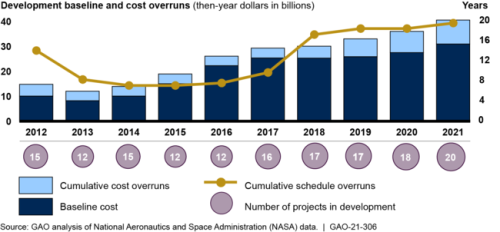Yutu-2 data suggests Moon’s far side is “bombarded more frequently” than the near side
The uncertainty of science: According to a new paper, based on ground-penetrating radar data obtained by China’s Yutu-2 rover on the far side of the Moon, scientists now think that the Moon’s more heavily cratered far side is that way because it actually gets bombarded more frequently than the near side.
From the paper’s abstract:
The Lunar Penetrating Radar (LPR) onboard Yutu-2 can transmit electromagnetic pulses to detect the lunar subsurface structure and properties of the regolith. The relative permittivity, loss tangent and TiO2+FeO content of lunar regolith materials at landing site are constrained with LPR data in this paper. The results indicate that the farside may be bombarded more frequently, leading to different regolith accumulation rates on the lunar nearside vs. farside. [emphasis mine]
The data was accumulated during the rover’s first five months on the surface, during those five lunar days. It found that the regolith at the landing site was about 39 feet thick, much thicker than found at the landing site for Yutu-1 on the Moon’s near side. The difference was partly expected because of the nature of the different locations, but combined with other factors the scientists concluded that a higher bombardment rate on the far side would also help explain the difference.
To put it mildly, this conclusion is uncertain. We only have one data point on the far side, and only a few more on the near side. At the same time, the conclusion is somewhat an example of science discovering the obvious. The very first images of the Moon’s far side, taken The Soviet Union’s Luna 3 lunar probe in 1959, showed the surface much more heavily cratered than the near side, with far less areas of smooth mare. Numerous mapping missions since have confirmed that impression.
And it is also intuitive to come to this conclusion. The near side always faces the Earth, which likely acts to intercept many of the type of meteorite hits that reach the Moon’s far side.
This conclusion however is still intuitive, and an honest scientist will not trust it. That this result from Yutu-2 appears to confirms it is therefore nice.
The uncertainty of science: According to a new paper, based on ground-penetrating radar data obtained by China’s Yutu-2 rover on the far side of the Moon, scientists now think that the Moon’s more heavily cratered far side is that way because it actually gets bombarded more frequently than the near side.
From the paper’s abstract:
The Lunar Penetrating Radar (LPR) onboard Yutu-2 can transmit electromagnetic pulses to detect the lunar subsurface structure and properties of the regolith. The relative permittivity, loss tangent and TiO2+FeO content of lunar regolith materials at landing site are constrained with LPR data in this paper. The results indicate that the farside may be bombarded more frequently, leading to different regolith accumulation rates on the lunar nearside vs. farside. [emphasis mine]
The data was accumulated during the rover’s first five months on the surface, during those five lunar days. It found that the regolith at the landing site was about 39 feet thick, much thicker than found at the landing site for Yutu-1 on the Moon’s near side. The difference was partly expected because of the nature of the different locations, but combined with other factors the scientists concluded that a higher bombardment rate on the far side would also help explain the difference.
To put it mildly, this conclusion is uncertain. We only have one data point on the far side, and only a few more on the near side. At the same time, the conclusion is somewhat an example of science discovering the obvious. The very first images of the Moon’s far side, taken The Soviet Union’s Luna 3 lunar probe in 1959, showed the surface much more heavily cratered than the near side, with far less areas of smooth mare. Numerous mapping missions since have confirmed that impression.
And it is also intuitive to come to this conclusion. The near side always faces the Earth, which likely acts to intercept many of the type of meteorite hits that reach the Moon’s far side.
This conclusion however is still intuitive, and an honest scientist will not trust it. That this result from Yutu-2 appears to confirms it is therefore nice.









